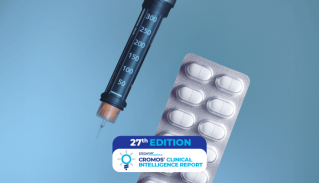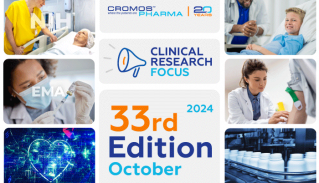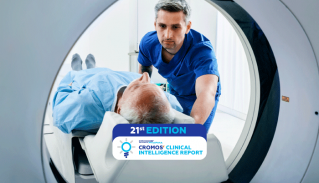
Cromos Pharma on best practice for a well-designed clinical study protocol
A good clinical study protocol is the foundation for a successful clinical trial. More than simply an instruction manual, the protocol serves many purposes and is the core mechanism used to translate an idea into a clinical trial. When writing a protocol it is important to carefully consider the research questions, its clinical importance and interrogate the feasibility of the study.
The protocol includes:
- Objective(s)
- Design
- Methodology
- Statistical considerations
- Organization
“50% of study success is down to a well-developed protocol”
The protocol plays a pivotal role in the success of the study and is also vital to ensuring the safety of study participants as well as integrity of the data. In order to ensure compliance with statutory requirements and patient protection, protocols are submitted to an Institutional Review Board (IRB) and to regulatory authorities (e.g. FDA in USA and EMA in EU). They are subjected to careful review prior to the Sponsor being allowed to conduct a trial. The protocol also provides instructions on how the study will be carried out by clinical staff.
Badly written protocols cost time and money
A poorly written protocol can have serious and costly consequences. The regulatory authority may require rewrites or updates. Clinical staff may misunderstand or misinterpret aspects of the protocol compromising the conclusions of the study and integrity of data collected. A study may be put on clinical hold causing delays to timelines. In the worst case scenario, a poor protocol can jeopardize patient safety or result in conclusions that don’t support regulatory approval.
Best practice for a well-written protocol
However, these negative consequences can be easily avoided by following best practice including:
Understand requirements before writing
This means being fully aware of ICH requirements as well as local laws and regulations in the country where the trial will be conducted (e.g. if you are conducting a trial in an EU country you will have to ensure compliance with local GDPR).
Content guidelines and templates
Avoid leaving out important details by compiling a content list in advance by referring to all relevant ICH requirements and guidance of local regulatory authorities (e.g. FDA or EMA). Check your list carefully against current requirements. If you are using a template make sure to check that it is up to date with current regulations.
Develop the synopsis and schedule of events early on in the process
Developing the synopsis and clear schedule of events early on can help avoid inconsistencies in the text and need for amendments later on.
Clear objectives and endpoints
Ambiguity is to be avoided at all costs in a good protocol. Create clear, definitive objectives and associated endpoints and avoid being vague in the language used in the protocol.
Provide detailed descriptions of assessments and operational feasibility
Provide clear, detailed information on the who, what, when, where and how of study conduct so clinical staff can follow procedures effectively and consistently. It’s a good idea to run this past clinical operations staff to check for inconsistencies or potential for misunderstandings.
Arrange the protocol to promote ease of reference
It may seem obvious but organizing your protocol in terms of layout so that readers can easily find specific sections is also really important in a good protocol. Using headers and sub headers effectively, as well as adding page numbers and section headings will help readers from regulatory authorities to clinical site staff more easily navigate the protocol.
Finally any study protocol should be subjected to rigorous risk-assessment before submission to highlight any inconsistencies and mitigate any risks.
Conclusion
A well-designed and written protocol is vital for protecting patients, allowing for collection of high-quality data, and preventing delays in development timelines. A clear understanding of regulatory requirements, defined and relevant study objectives and endpoints, sufficient detail within the protocol, and ensuring that the protocol document is user friendly, will all assist in making your clinical trial a success.
Cromos Pharma has extensive experience in development, scientific and operational input, adjustment to country specifics of clinical study protocols. Our medical writing team is comprised of MD’s and Ph.D.’s in medical sciences. Over the past 18 years they have crafted significant number of documents for all phases of clinical trials in a wide range of therapeutic indications. Our expert team can assist you in the design and writing of a protocol and all other documentation to ensure that your project runs according to plan.






























